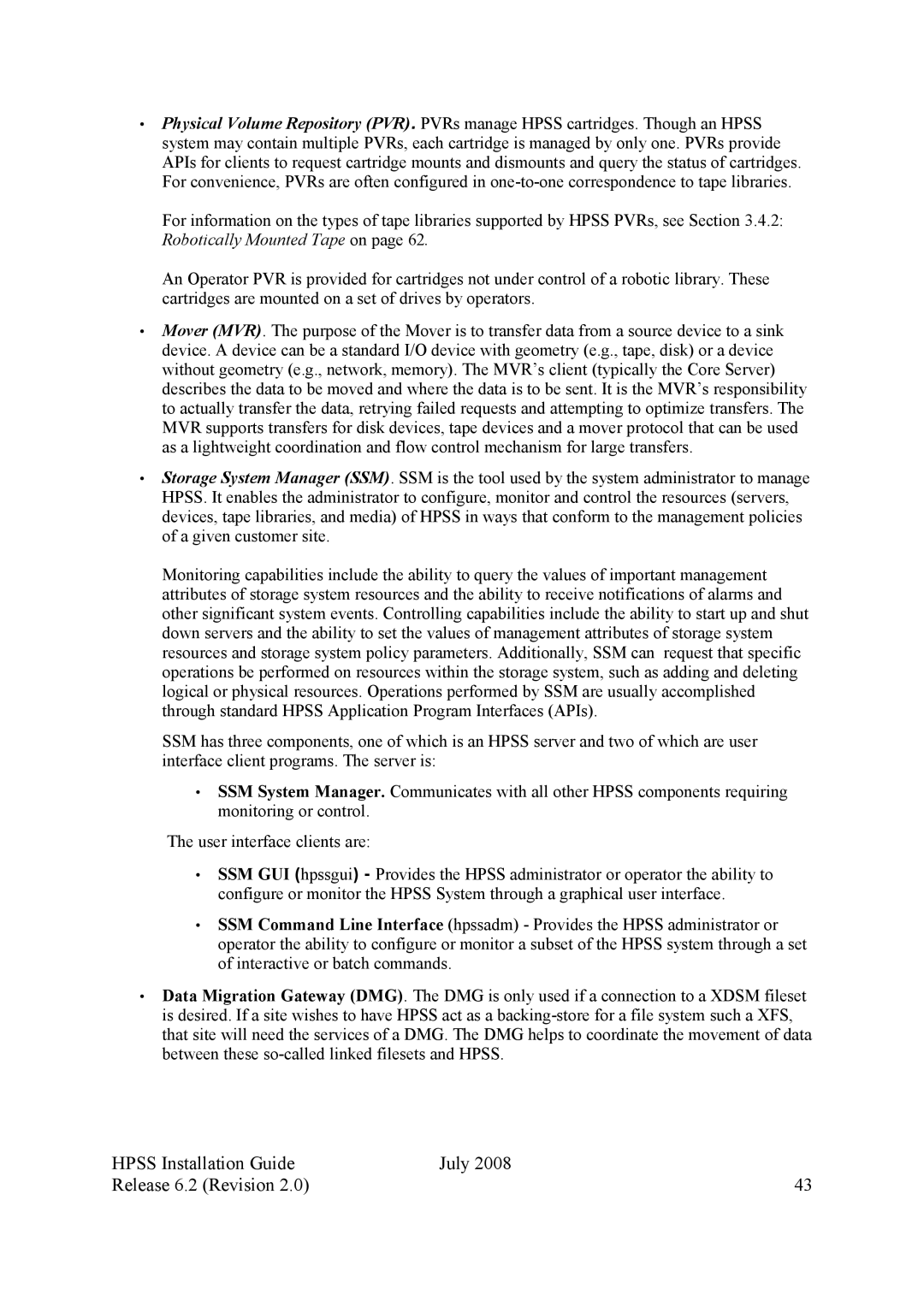•Physical Volume Repository (PVR). PVRs manage HPSS cartridges. Though an HPSS system may contain multiple PVRs, each cartridge is managed by only one. PVRs provide APIs for clients to request cartridge mounts and dismounts and query the status of cartridges. For convenience, PVRs are often configured in
For information on the types of tape libraries supported by HPSS PVRs, see Section 3.4.2: Robotically Mounted Tape on page 62.
An Operator PVR is provided for cartridges not under control of a robotic library. These cartridges are mounted on a set of drives by operators.
•Mover (MVR). The purpose of the Mover is to transfer data from a source device to a sink device. A device can be a standard I/O device with geometry (e.g., tape, disk) or a device without geometry (e.g., network, memory). The MVR’s client (typically the Core Server) describes the data to be moved and where the data is to be sent. It is the MVR’s responsibility to actually transfer the data, retrying failed requests and attempting to optimize transfers. The MVR supports transfers for disk devices, tape devices and a mover protocol that can be used as a lightweight coordination and flow control mechanism for large transfers.
•Storage System Manager (SSM). SSM is the tool used by the system administrator to manage HPSS. It enables the administrator to configure, monitor and control the resources (servers, devices, tape libraries, and media) of HPSS in ways that conform to the management policies of a given customer site.
Monitoring capabilities include the ability to query the values of important management attributes of storage system resources and the ability to receive notifications of alarms and other significant system events. Controlling capabilities include the ability to start up and shut down servers and the ability to set the values of management attributes of storage system resources and storage system policy parameters. Additionally, SSM can request that specific operations be performed on resources within the storage system, such as adding and deleting logical or physical resources. Operations performed by SSM are usually accomplished through standard HPSS Application Program Interfaces (APIs).
SSM has three components, one of which is an HPSS server and two of which are user interface client programs. The server is:
•SSM System Manager. Communicates with all other HPSS components requiring monitoring or control.
The user interface clients are:
•SSM GUI (hpssgui) - Provides the HPSS administrator or operator the ability to configure or monitor the HPSS System through a graphical user interface.
•SSM Command Line Interface (hpssadm) - Provides the HPSS administrator or operator the ability to configure or monitor a subset of the HPSS system through a set of interactive or batch commands.
•Data Migration Gateway (DMG). The DMG is only used if a connection to a XDSM fileset is desired. If a site wishes to have HPSS act as a
HPSS Installation Guide | July 2008 |
Release 6.2 (Revision 2.0) | 43 |
